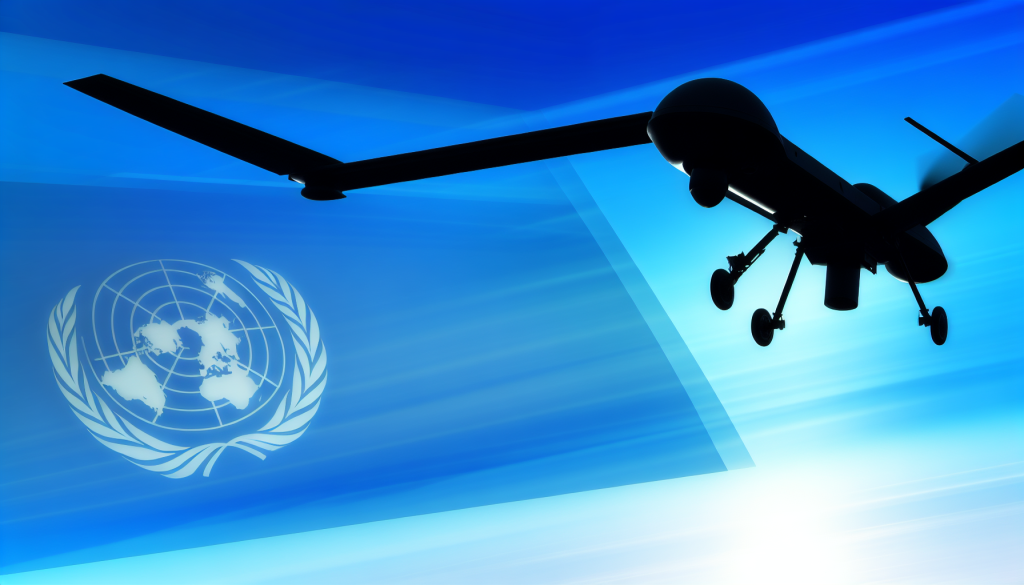The Future of Uncrewed Systems in UK Defence Strategy
The evolving landscape of modern warfare increasingly emphasizes the role of uncrewed systems, a fact recently underscored by the UK Ministry of Defence. With test flights of innovative technologies—such as Australia’s Boeing MQ-28 Ghost Bat and the US Navy’s MQ-25 Stingray—drawing global attention, the UK is meticulously monitoring these developments. However, as Defence Minister Luke Pollard noted, the nation’s procurement decisions are deeply entwined with its own Strategic Defence Review (SDR) and investment strategies.
The Strategic Defence Review and Transformation Agenda
The SDR provides a roadmap for the UK’s defence strategy over the coming decade and beyond. It is not merely a checklist of military assets; it represents a comprehensive transformation agenda aimed at modernizing defence operations. Minister Pollard emphasized that this evolution is significantly influenced by lessons learned from current conflicts, particularly the ongoing situation in Ukraine.
According to Pollard, the SDR outlines the necessity of integrating drones, data, and digital warfare into the fabric of the Armed Forces. This approach promises to bolster military capabilities while ensuring the safety of operations. The focus on embracing new technologies signifies a pivotal shift for the UK’s armed forces, reflecting a broader trend in military strategy worldwide.
Attributes of Uncrewed Systems
One of the key highlights of the SDR is the recognition of uncrewed systems as an immediate priority for the Royal Air Force (RAF). The report advises a varied arsenal of capabilities rather than dependence on a single platform. This strategy aims to create a more resilient and versatile military force.
Moreover, the UK government has committed to a substantial £2 billion investment in the field of autonomy throughout this parliamentary session. Pollard elaborated on this by announcing the establishment of the Defence Uncrewed Systems Centre, slated to achieve initial operating capability by February 2026. This centre will serve as a hub for research, development, and integration of uncrewed technologies within the UK’s military framework.
Fostering International Collaboration
The conversation surrounding uncrewed systems goes beyond mere technological capabilities; it reflects a broader context of international collaboration. Members of the UK Parliament, including Conservative MP Ben Obese-Jecty, have been proactive in questioning the implications of allied programmes on the UK’s defence strategy. On 19 September, he posed several written inquiries concerning pivotal systems such as the MQ-28 Ghost Bat, the MQ-25 Stingray, and General Atomics’ YFQ-42.
In response, Minister Pollard refrained from making direct comparisons between these systems and the UK’s procurement options. Instead, he highlighted the significance of collective investment in autonomous technologies among NATO allies. This collaborative spirit aims to ensure that the UK does not operate in isolation but rather as part of a unified strategy that leverages shared advancements and innovations.
Balancing Achievements and Future Directions
While it’s clear that the UK is keenly observing foreign developments in uncrewed aircraft technologies, Pollard has been careful not to commit to any specific foreign models. By framing these systems as part of a larger dialogue among allies, he stressed the importance of developing the UK’s integrated approach to defence procurement.
The minister acknowledged that the specifics of future acquisitions are not yet decided. He assured Parliament that the final decisions regarding which uncrewed systems to procure will be delineated in the upcoming Defence Investment Plan. This careful consideration allows for flexibility and adaptability as the global security environment continues to evolve.
In summary, while the UK Ministry of Defence is poised to embrace the advantages of uncrewed systems, the direction taken will be distinctly shaped by national interests, strategic reviews, and the lessons learned from allies in the field. The journey ahead promises numerous challenges and opportunities in redefining the role of technology in modern military operations.

